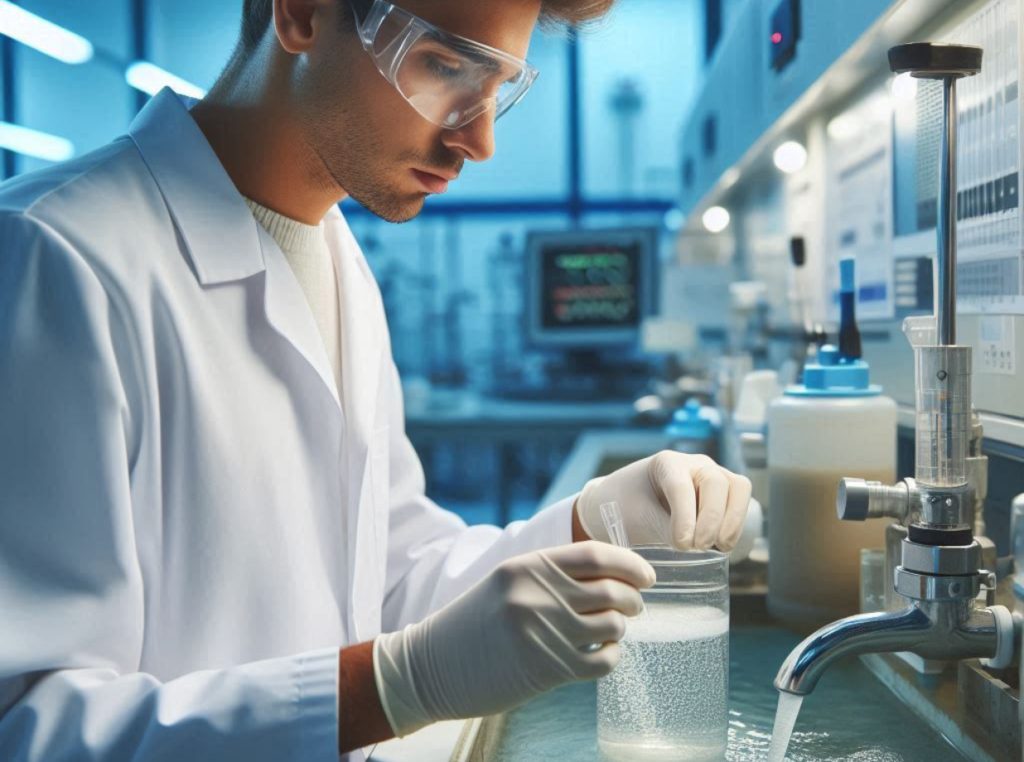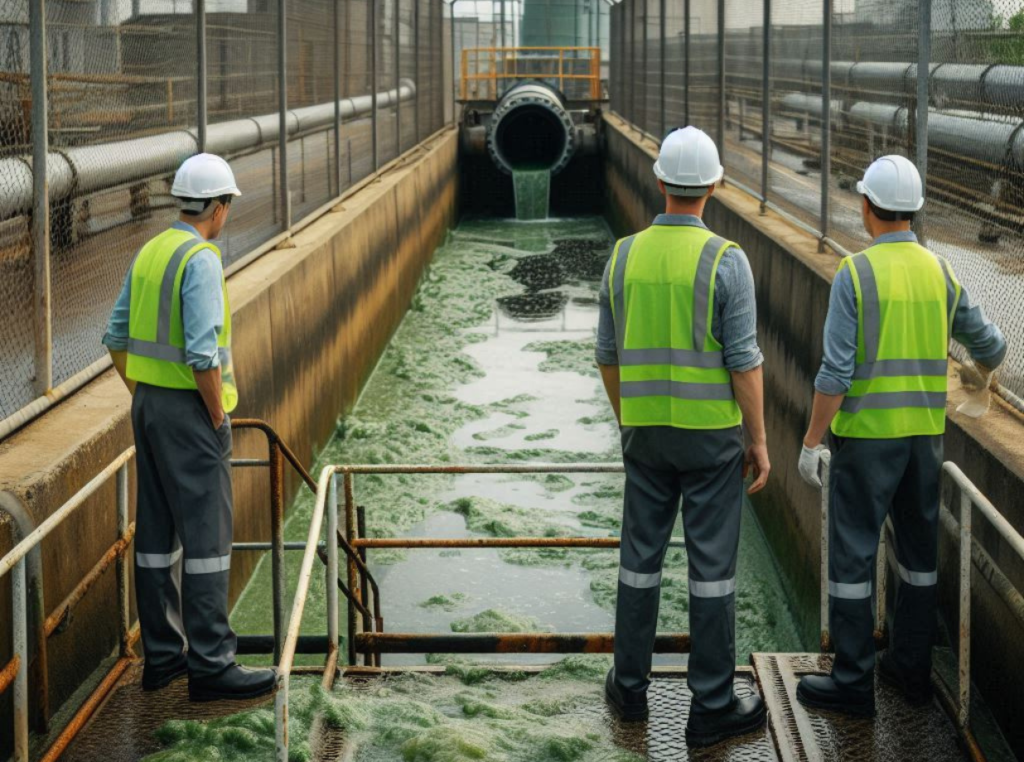Looking to master phosphorus removal in activated sludge systems? This guide explores key strategies for reducing phosphorus levels in wastewater, from biological methods to chemical precipitation. Discover the mechanisms, benefits, and challenges of each approach as we navigate the complexities of modern wastewater treatment. Whether you’re an experienced operator or a curious student, this concise overview will enhance your understanding of effective phosphorus management.
Understanding Phosphorus in Wastewater
Phosphorus, an indispensable nutrient for living organisms, often finds its way into wastewater through various sources. Domestic sewage, agricultural runoff, and industrial effluents contribute significant amounts of this element. Within the aquatic environment, excessive phosphorus concentrations foster the proliferation of algae and other aquatic plants, triggering eutrophication—a detrimental process that depletes oxygen and threatens aquatic life.

The Activated Sludge Process: An Overview
The activated sludge process, a cornerstone of modern wastewater treatment, is a sophisticated and highly efficient biological method employed to eliminate organic pollutants and nutrients. This process leverages microbial consortia to decompose organic matter, ultimately resulting in the formation of dense microbial aggregates known as activated sludge flocs. It operates through a series of stages: influent mixing, aeration, sedimentation, and sludge management.
Influents and Mixing
Influent wastewater enters the treatment facility, where it undergoes preliminary screenings to remove large debris. This screened wastewater is then directed to aeration tanks, where it is mixed with previously formed activated sludge. The mixing ensures uniform distribution of microbial communities and organic substrates.
Aeration
Aeration tanks play a pivotal role by supplying oxygen required for microbial respiration and metabolism. Through mechanical or diffused aeration systems, oxygen is continuously introduced, creating an environment conducive to the growth of aerobic microorganisms. These organisms metabolize organic compounds, converting them into biomass, carbon dioxide, and water.
Sedimentation
Following aeration, the mixed liquor (a combination of wastewater and activated sludge) flows into secondary clarifiers. Here, gravity aids in the settling of microbial flocs, which are separated from the treated effluent. The clear effluent is collected and discharged, often subject to further tertiary treatments for enhanced water quality.
Sludge Management
The settled activated sludge undergoes various stages of concentration, stabilization, and disposal. A portion of the sludge is recycled back to the aeration tanks to maintain a consistent microbial population. The excess sludge is treated through processes such as anaerobic digestion or mechanical dewatering before its ultimate disposal or use in land applications.
Phosphorus Removal Mechanisms
In the quest to mitigate phosphorus pollution, the activated sludge process employs diverse mechanisms. These can be broadly categorized into chemical, biological, and hybrid methods, each with its advantages and limitations.
Chemical Precipitation
Chemical precipitation involves the addition of coagulants—typically metallic salts such as aluminum sulfate (alum), ferric chloride, or lime. These coagulants react with phosphate ions in the wastewater, forming insoluble precipitates that can be subsequently removed through sedimentation or filtration. While effective, this method necessitates careful chemical dosage control and generates chemical sludge requiring further handling.
| Advantages | Disadvantages |
|---|---|
| High phosphorus removal efficiency | Increased chemical usage and costs |
| Relatively simple to implement | Generation of chemical sludge requiring disposal |
| Immediate effect on phosphorus levels | Potential for residual chemical contamination |
Enhanced Biological Phosphorus Removal (EBPR)
EBPR leverages the capabilities of specific microbial communities, known as polyphosphate-accumulating organisms (PAOs), to sequester phosphorus. The process involves a cyclic sequence of anaerobic and aerobic conditions. During the anaerobic phase, PAOs release intracellularly stored phosphorus as orthophosphate while assimilating volatile fatty acids (VFAs). In the subsequent aerobic phase, the PAOs take up more phosphorus from the wastewater than they released anaerobically, storing it as intracellular polyphosphate granules.
| Advantages | Disadvantages |
|---|---|
| Reduced chemical usage | Process complexity and operational challenges |
| Lower sludge production | Requires careful control of operational parameters |
| Environmental sustainability | Susceptibility to fluctuations in influent and process conditions |
Hybrid Approaches
Combining chemical and biological techniques yields hybrid approaches that harness the strengths of both methods. For instance, chemically enhanced phosphorus removal can be integrated with EBPR processes, offering flexibility and enhanced treatment performance under varying conditions.
| Advantages | Disadvantages |
|---|---|
| High phosphorus removal efficiency | Increased process complexity |
| Greater resilience to process fluctuations | Potential for higher operational costs |
| Balances chemical consumption and effectiveness | Requires integrated process monitoring and control |
Operational Challenges and Solutions
The path to efficient phosphorus removal within the activated sludge process is laden with operational challenges. Addressing these challenges necessitates a blend of technological innovation, stringent monitoring, and adaptive management strategies.
Process Control and Monitoring
Effective phosphorus removal hinges on precise control and monitoring of process parameters. Key factors include:
- Dissolved Oxygen (DO): Adequate DO levels are critical for aerobic microbial activities. Insufficient oxygen can hinder microbial metabolism, while excessive aeration can lead to unnecessary energy consumption.
- Sludge Age: Sludge age, or solids retention time (SRT), influences the composition and activity of microbial communities. Optimal SRT promotes the growth of desired PAOs while preventing the proliferation of undesirable organisms.
- pH and Alkalinity: Maintaining a stable pH and sufficient alkalinity enhances microbial activity and chemical precipitation. Fluctuations in these parameters can disrupt phosphorus removal processes.
Mitigating Inhibitory Substances
Certain substances present in wastewater can impede phosphorus removal processes. Industrial effluents, containing heavy metals or toxic compounds, may inhibit microbial activities or interfere with chemical precipitation reactions. Implementing pretreatment measures, such as the isolation and treatment of industrial discharges, can mitigate these inhibitory effects.
Managing Sludge Accumulation
The accumulation of sludge, or “bulking,” can compromise sedimentation efficiency and phosphorus removal performance. Strategies to mitigate sludge accumulation include optimizing sludge wasting rates, employing selectors to favor PAO growth, and implementing advanced solids separation technologies.

Innovations in Phosphorus Removal
Advancements in wastewater treatment technologies continue to reshape the landscape of phosphorus removal within the activated sludge process. Several promising innovations hold the potential to enhance the efficiency and sustainability of phosphorus management.
Membrane Bioreactors (MBRs)
MBRs combine the biological treatment capabilities of activated sludge with membrane filtration, resulting in superior effluent quality and enhanced phosphorus removal. By providing a physical barrier, membranes facilitate the retention of beneficial microbial populations and improve sludge settleability, mitigating issues such as bulking.
Phosphorus Recovery
Emerging technologies focus on not only removing phosphorus from wastewater but also recovering it for reuse. Phosphorus recovery processes, such as struvite precipitation, enable the extraction of phosphorus in a crystalline form that can be used as a slow-release fertilizer. These approaches contribute to resource recovery and sustainability within wastewater treatment systems.
Advanced Sensors and Automation
Innovative sensors and automation systems enable real-time monitoring and adaptive control of phosphorus removal processes. By continuously analyzing key parameters such as phosphorus concentrations, DO levels, and pH, these technologies facilitate prompt adjustments to optimize performance and minimize operational disruptions.
Environmental and Regulatory Implications
Phosphorus removal within the activated sludge process extends beyond technological considerations; it encompasses vital environmental and regulatory implications. Stringent regulations and environmental stewardship underscore the importance of effective phosphorus management to safeguard water quality and ecosystems.
Regulatory Standards
Regulatory agencies worldwide have implemented stringent standards for phosphorus concentrations in treated effluent to curb eutrophication and protect aquatic environments. Compliance with these standards requires meticulous design, operation, and monitoring of phosphorus removal processes in wastewater treatment facilities.
Ecological Benefits
Effective phosphorus removal contributes to the mitigation of eutrophication, preserving the ecological balance of aquatic systems. By preventing excessive phosphorus loadings, wastewater treatment facilities play a crucial role in maintaining biodiversity, fish populations, and overall ecosystem health.
Resource Optimization
Innovations in phosphorus recovery and reuse align with circular economy principles, promoting resource optimization and sustainability. By recovering phosphorus from wastewater, treatment facilities can contribute to regional nutrient management and reduce reliance on conventional phosphorus sources, such as mining.
Future Prospects and Research Directions
The journey through the activated sludge process and phosphorus removal strategies unveils an intricate interplay of science, engineering, and environmental stewardship. As the field evolves, several promising research directions hold the potential to drive further advancements and address emerging challenges.
Microbial Ecology and Genomics
Advances in microbial ecology and genomics offer profound insights into the diversity, dynamics, and functions of microbial communities involved in phosphorus removal. By deciphering the genetic and metabolic capabilities of key microorganisms, researchers can develop targeted strategies to enhance PAO activity and resilience.
Integrated Nutrient Management
Holistic approaches that integrate phosphorus removal with nitrogen and organic carbon management offer synergistic benefits for wastewater treatment. Cross-disciplinary research exploring nutrient cycling, microbial interactions, and system optimization can lead to comprehensive and efficient nutrient management solutions.
Climate Resilience
Climate change poses novel challenges to wastewater treatment processes, including shifts in precipitation patterns, temperature fluctuations, and extreme weather events. Research efforts aimed at enhancing the climate resilience of phosphorus removal processes are imperative to ensure robust performance under variable and uncertain conditions.
Conclusion
In the symphony of wastewater treatment, phosphorus whispers its significance, demanding our attention and ingenuity. By embarking on this journey through the activated sludge process, you have delved into the multifaceted world of phosphorus removal—an endeavor that melds scientific rigor with ecological responsibility. Through chemical, biological, and hybrid approaches, along with innovative technologies and resilient strategies, the quest for effective phosphorus management continues to evolve, safeguarding water quality, ecosystems, and the very fabric of life. As the whispers of phosphorus guide us, let us remain steadfast in our pursuit of sustainable and harmonious wastewater treatment.
Resources
- Biological Phosphorus Removal in Wastewater Treatment Plants
- Comprehensive review of biological phosphorus removal mechanisms and strategies.
- Enhanced Biological Phosphorus Removal: From the Process to the Molecular Level
- In-depth analysis of the microbiology behind phosphorus removal.
Industry Guidelines and Reports
- Nutrient Control Design Manual: State of Technology Review Report
- EPA report on various nutrient removal technologies, including phosphorus.
- Phosphorus Treatment and Removal Technologies
- Minnesota Pollution Control Agency’s overview of phosphorus removal techniques.
Educational Resources
- Activated Sludge Process for Phosphorus Removal
- IWA Publishing’s educational article on the basics of phosphorus removal.
- Phosphorus Removal in Wastewater Treatment
- Water Online’s practical guide to phosphorus removal strategies.
Video Resources
- Phosphorus Removal from Wastewater – Explained
- Educational video explaining various phosphorus removal techniques.
- Enhanced Biological Phosphorus Removal
- Detailed explanation of the EBPR process in activated sludge systems.
Professional Organizations and Conferences
- Water Environment Federation (WEF) – Nutrient Removal and Recovery
- Resources and updates from a leading water quality organization.
- International Water Association (IWA) – Nutrient Removal and Recovery Conference
- Information on conferences and events focusing on nutrient removal technologies.
Remember to verify these links and update them with the most current and relevant resources before publishing your content.
